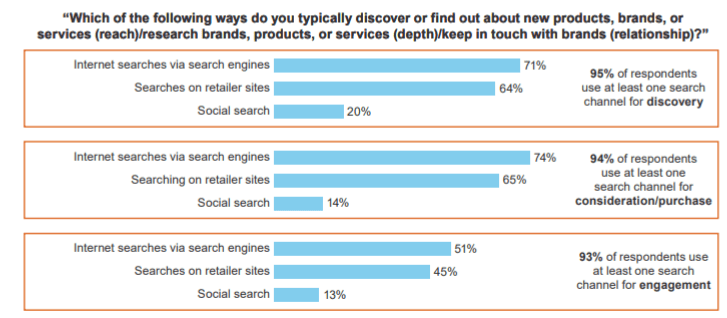With your buying guides, it’s OK to be more specific. Here’s an example: Once you create this persona, it’ll be much easier to develop a product buying guide based on the wants and needs of the consumer. Choose a format After you determine your audience, you need to figure out the style and format of your writing guide. You also need to decide the format of your buying guide content: compare multiple products general information about what to look for beginner’s purchasing guide introduce a new niche or type of product Here’s an example of a desk buying guide from Wayfair: Rather than writing a guide on specific products, they created a list of the features that consumers should look for when buying a desk. Include a CTA The whole purpose of your product buying guide is to inform consumers about their options, help them decide that they want to buy something, and then ultimately convert. Obviously, you want them your customer to buy from you. But if you don’t give the reader a CTA or a way to buy, that might not happen. If you make your SEO strategy too broad and general, there may be more people searching for that term, but your click-through rates will be much lower. People searching for these keywords have a specific want. The number one reason why customers research products online is to read product reviews.
The Internet makes it possible for you to sell products to virtually anyone in the world.
Let that sink in for a moment.
You have a huge opportunity, yet, your competition is fiercer than ever. Every other business has the same opportunities as you.
As a marketer, you need to create an advantage over your competitors. To do this effectively, you need to fully understand how consumers shop. What process do they take to go from identifying a need for something to making a purchase? In most cases, it starts with a general search.

74% of people turn to a search engine during the consideration and purchasing phases of the buying process, and lucky for unknown brands, 71% of shoppers use search engines to discover new products.
That’s why product buying guides are so great. When a customer searches a product online, a buying guide can serve as a way to convince them to make a purchase. More specifically, the guide can convince them to buy from your brand. But there is a science behind this strategy.
This guide will show you how to leverage product buying guides to drive sales. Whether you have product buying guides that need improvement, or you’ve never used this tactic and want to try it out, you’ll benefit from the tips covered below.
Define your target audience
Before you create and publish a product buying guide, you need to determine who will be reading it. Not every guide should be intended to please everyone. It depends on who is going to be buying what you’re selling. It sounds obvious, but you’d be surprised how many businesses get this wrong.
The target market for a specific product category isn’t necessarily the same as your target audience for your entire brand. With your buying guides, it’s OK to be more specific.
For example, if you’re selling a hiking backpack, you’ll want to write your guide for people who are in the market for that item, even though you also sell other items, like a piece of carry-on luggage aimed at business travelers. People who are in the market for this product will get lost and be uninterested if the copy doesn’t speak to them specifically.
One of the best ways to define your target audience is by creating a customer persona. Here’s an example:

Once you create this persona, it’ll be much easier to develop a product buying guide based on the wants and needs of the consumer. You’ll have an image in your mind of who they are and what needs they have.
Your buying guide won’t necessarily appeal to as many people, but that’s OK. You’ll end up having much higher conversion rates for the audience that you’re targeting in the first place.
Choose a format
After you determine your audience, you need to figure out the style and format of your writing guide. You’ve got several different options to choose from here. You can develop a guide that’s mostly text, or have a guide with lots of pictures. It’s even possible to incorporate some video content into your buying guides. Maybe you want to use a combination of these styles. There are lots of ways to approach this.
You also need to decide the format of your buying guide content:
- compare multiple products
- general information about what to look for
- beginner’s purchasing guide
- introduce a new niche or type of product
Here’s an example of a desk buying guide from Wayfair:

Rather than writing a guide on specific products, they created a list of the features that consumers should look for when buying a desk. The guide is mostly text but has pictures to illustrate the points they are trying to make. It’s a very simple and easy-to-follow format that uses visual elements well. Each feature is numbered, followed by a bulleted list with additional details. The images, numbers, and bullets break up the content, so it’s easy for website visitors to scan and consume it. No intimidating walls of text here!
Include a CTA
The whole purpose of your product buying guide is to inform consumers about their options, help them decide that they want to buy something, and then ultimately convert. Let’s not lose sight of that final stage when you’re writing these.
Obviously, you want them your customer to buy from you. But if you don’t give the reader a CTA or a way…

COMMENTS